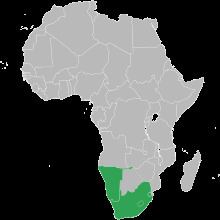 | ||
The Common Monetary Area (CMA) links South Africa, Namibia, Lesotho and Swaziland into a monetary union. It is allied to the Southern African Customs Union (SACU).
Contents
Although the South African rand is legal tender in all states, the other member states issue their own currencies: the Lesotho loti, Namibian dollar and Swazi lilangeni. However, these are exchanged at par with the rand and there is no immediate prospect of change. Foreign exchange regulations and monetary policy throughout the CMA continue to reflect the influence of the South African Reserve Bank.
Of the SACU members, only Botswana is currently out of the CMA, having replaced the rand with the pula in 1976.
History
The CMA, enacted in July 1986, originated from the Rand Monetary Area (RMA), which was established in December 1974; the signatories of the latter were South Africa, Lesotho, and Swaziland. The CMA has since been replaced by the present Multilateral Monetary Area (MMA) as of February 1992, when Namibia formally joined the monetary union.
